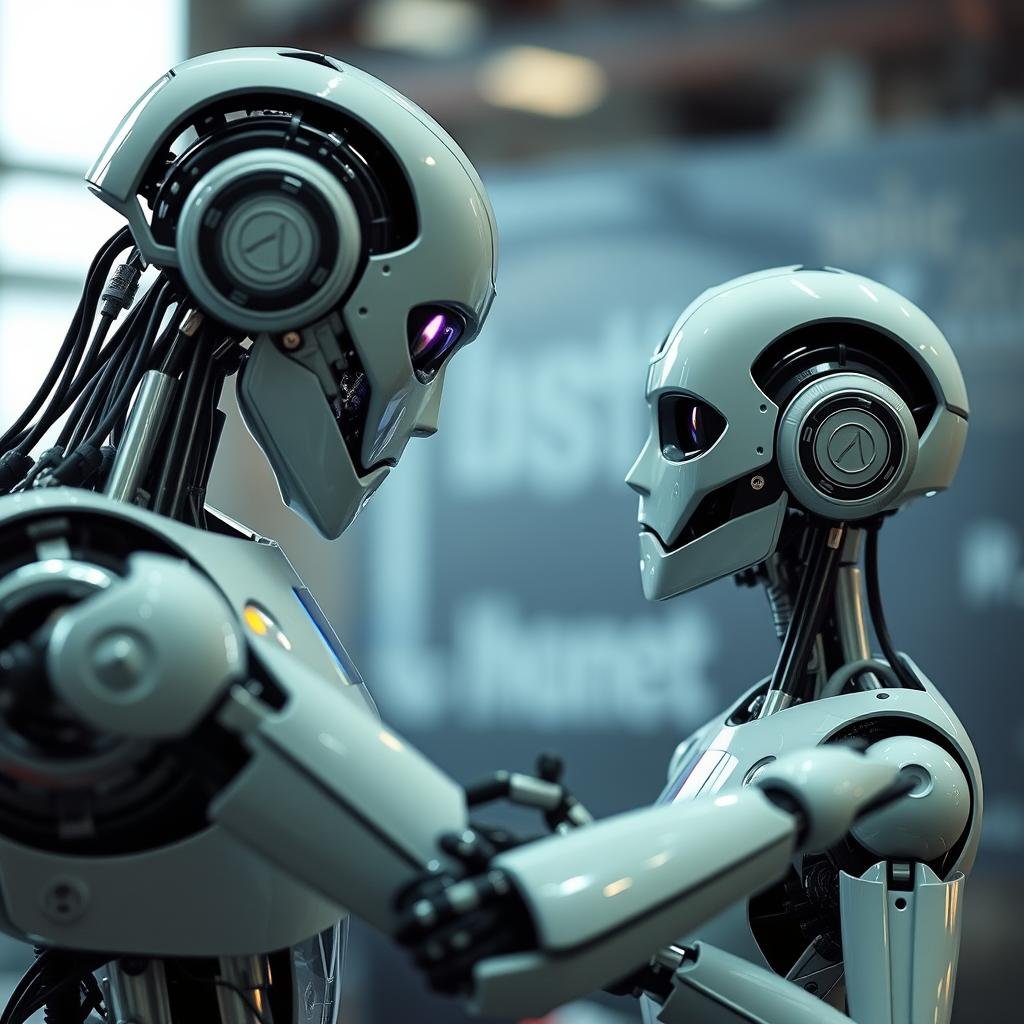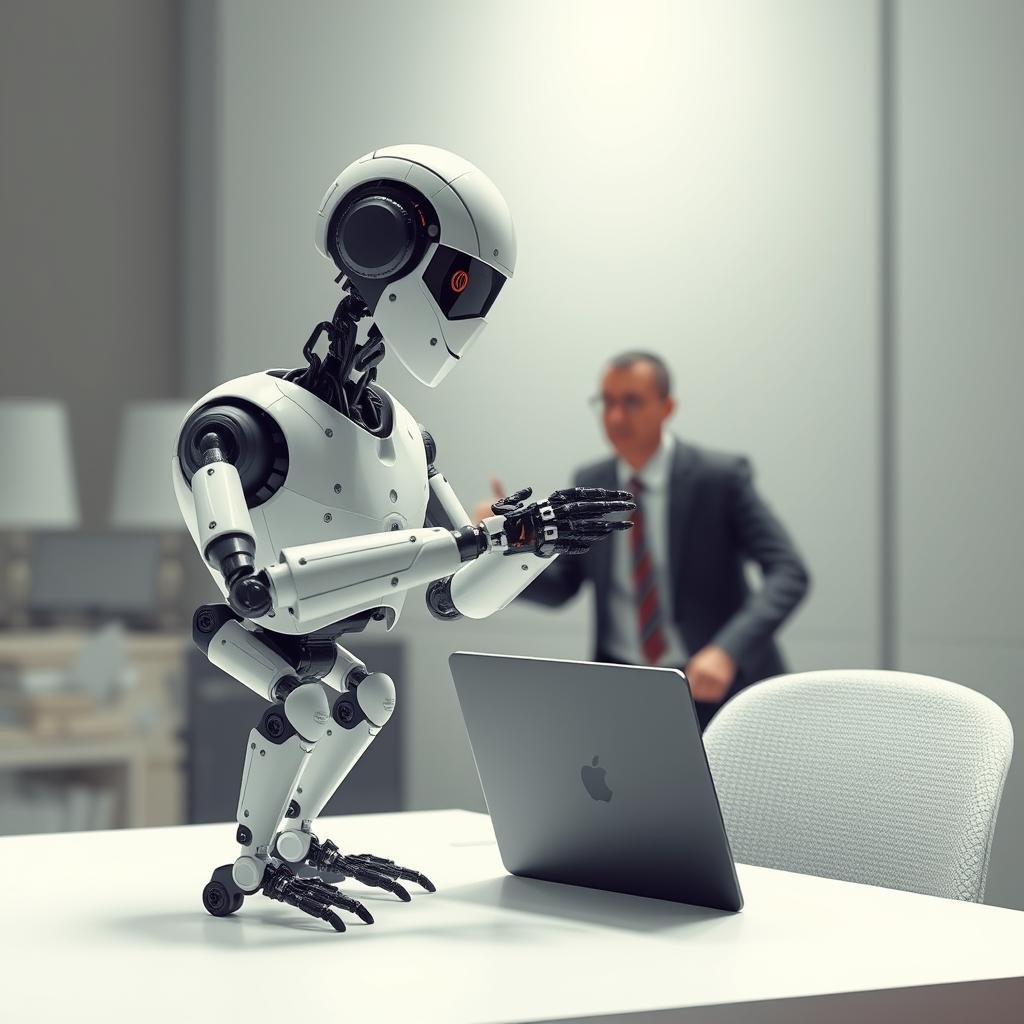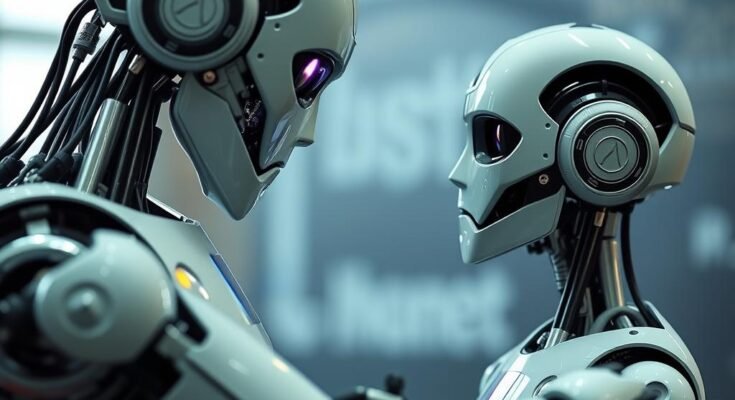The ascendancy of artificial intelligence (AI) has seen a seminal change in the world’s workforce in recent years. It started with mere automation of routine work, and now involves an advanced AI system performing knowledge work. From customer-service chatbots to self-driving vehicles and decision-making algorithms, the result is not so much that AI is assisting human labor as it is competing with it, in a broad range of applications. This tectonic shift is upending industries, transforming career paths and coaxing reasoned debate about the future of work.

The Scope of AI Integration
AI solutions are now pervasive across virtually every industry. In the manufacturing, robots driven by AI work faster, AND more accurately than humans. Healthcare ML has machines outperforming experienced professionals in disease diagnosis, at par or otherwise. In the finance industry, AI is used to spot fraudulent activity, predict market trends and automate personal portfolios. Even in creative domains such as journalism or design and music composition are AI tools already taking over.
Customer service presents one of the clearest examples of AI’s incursion into the former realm of people power. Artificial intelligence based virtual assistants and chatbots manage millions of interactions daily solving problems at scale, without any human intervention. These systems learn from past conversations and get better over time, and they can do so without ever going offline.
Job Displacement vs Job Evaluation

AI has undoubtedly caused people to lose jobs — especially those that revolve around repetitive, predictable tasks — but it has also led to new opportunities. AI development, data science, ethics, and AI system careers
There’s also a growing need for hybrids who are both domain experts and digitally literate. Health workers may work with AI diagnostic tools, and marketers may use AI analytics to develop strategies. Employment of the future will probably demand a mix of human intuition and artificial intelligence expertise.
The Impact Wages and Inequality
As AI is incorporated into the workforce, wage disparities have continued to grow. Highly qualified professionals able to work with AI command higher wages, while workers in low-skill, highly automatable roles see their paychecks stagnate or jobs disappear. This dynamic risks deepening economic inequality, especially in places or industries that are not transitioning quickly to the new technology.

Also, businesses, which have embraced AI, often reduce headcounts of human workers, leading to higher productivity and lower costs. This pattern could result in increased profits for companies, but also comes with ethical implications on wealth distribution and the responsibility of corporations to assist displaced workers.
The Human-AL Collaboration Model
For all the chatter of AI shunting us from the workforce, many experts believe a symbiosis between human workers and artificial intelligence offers the most promising path to the sort of technological revolution that Winfield hopes for. Called “augmented intelligence,” the model emphasizes the ways that AI can improve human abilities — rather than simply replace them. In the future, surgeons may use AI to help plan complicated procedures, lawyers can more quickly analyze case law and teachers may be able personalize education based on AI-spawned insights.
This transition is the role of governments, educators and industry. Re-skilling initiatives, digital literacy programmes and policy frameworks are crucial in ensuring the workforce is equipped for this shift.
Ethical and Social Considerations
There are also growing ethical implications to the accelerated adoption of AI. Among them: privacy, algorithmic bias and transparency. AI systems themselves can reflect and even reinforce biases of society if not thoughtfully developed and managed. There’s also the issue of accountability: when AI errs in ways that devastate lives or livelihoods.
Society must tread carefully on all of these challenges and make sure that the development of AI follows human values and serves a maximum group of people.
Conclusion
There’s no doubt that A.I. is taking over lots of work — but it doesn’t have to be bad news. It offers a chance to reimagine work itself and elevate human creativity and emotional intelligence, and construct a more resilient and inclusive labor market. and technological innovation in response.




